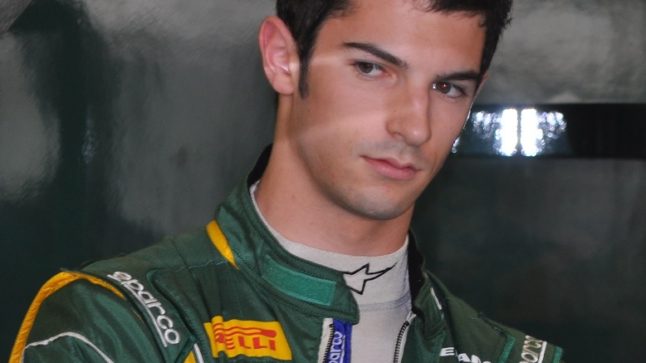For those of us watching the Indy 500 on TV, that was quite an unforgettable moment. You know, the moment when the cameras panned to Alexander Rossi’s #98, and the realization that he’s going to try to make it all the way to the end without refueling while every other driver on the lead lap had already decided to pit. That incredulous disbelief that the last guy in the Andretti stable of drivers anyone would expect to be up at the front was going to win the thing. It was just like that moment when you realized Verbal Kint WAS Keyser Soze.
“Wait, wait, wait! Rossi’s gonna win? What?!? No. Come on. No way. No. No no no. . .” And the next thing you know you find yourself sounding like an Amy Winehouse song.
As tempting as it can be to discount a win on fuel strategy off as nothing more than a fluke, that’s often how an Indycar race is won. I remember back in 2007, in one of the few Indy 500s your humble host been blessed to attend, when Dario Franchitti was leaning out the fuel to win in a rain shortened race. Franchitti had suffered a cut tire earlier in the race and had to pit off sequence, which set him up for a pit stop before a whole lotta yellow flags, and a whole lot more rain. It was one of those years where Tony Kanaan looked as strong as anyone and didn’t win. Not unlike this year. And every other year this century not named “2013”.
(“Kanaan didn’t race at The Speedway until 2002. You’ve got a Google; you can look this stuff up yourself.” – The Spotter)
Although in fairness to Franchitti, he qualified in the front row that year, and had a strong car. But then again Rossi wasn’t particularly slow for a guy spending his first Month of May in the land of Track Fries and Tenderloins. No, he didn’t qualify in the front row, but he just missed qualifying for the, err, final qualifications during the Pole Days or whatever they were called this year. And the Andretti cars were all fast enough to win, although I’m 99% sure Rossi’s plan was to avoid putting it in the wall instead of driving with maximum aggression.
And therein lies the reason why his win is no less legitimate than any other winner. In order for a fuel strategy to work a driver has to pretty much stay on the lead lap while using less fuel that his or her competitors. And that’s exactly what Rossi did, making all 800 turns without putting it into the wall. Ask JR Hildebrand what I’m talking about.
(“No, please, do not ask him that.” – The Spotter)
In a way, this wasn’t entirely unlike 1998, when Eddie Cheever registered only his second win. He was another American driver who after a stint in F1 turned to Indycar racing. Unlike Rossi, Cheever was an older, wiser, more. . .I had you going there, right? Just checking to make sure you’re still reading. Anyhow, unlike Rossi, Cheever had actually won a single Indycar race, at Walt Disney World a year beforehand. In that race Tony Stewart had led nearly flag to flag, but he suffered a late mechanical failure and Cheever inherited the win. Also, totally legitimate.
But then Cheever was a factor in that 1998 Indy 500, whereas Rossi wasn’t really battling for the lead. Really, after keeping the car clean for much of the race it seems Bryan Herta and his team decided to roll the proverbial dice and go with the “what if we save fuel and there aren’t any yellow flags the rest of the race” strategy. Of all the Indycar races I’ve seen, I seem to recall one where there had been several caution flags but after the last stop one race team successfully gambled on no more yellows. That was in 2008 at Motegi, Japan. At the time my oldest daughter had a reaction like this.
“Wait, wait, wait! Danica’s gonna win? What?!? Yes!! Come on! Yeah!! Yeah!! Yeah!!”
Congratulations to Rossi. You won the 100th running of the Indianapolis 500. Forever.
FINAL LAP: I’m not sure if after his win Rossi was in shock, or was just trying to be calm, or is just a cat in a lower key. Probably all three. But the passion of Carlos Munoz reaction to finishing second made me think of Tony Kanaan. It seems the taste of leading the Greatest Spectacle in Racing without a victory can be tortuous, and after leading his first seven times at Indy without a win Kanaan was, for many years, visibly aching to win this race. Munoz had that same look on Sunday.

